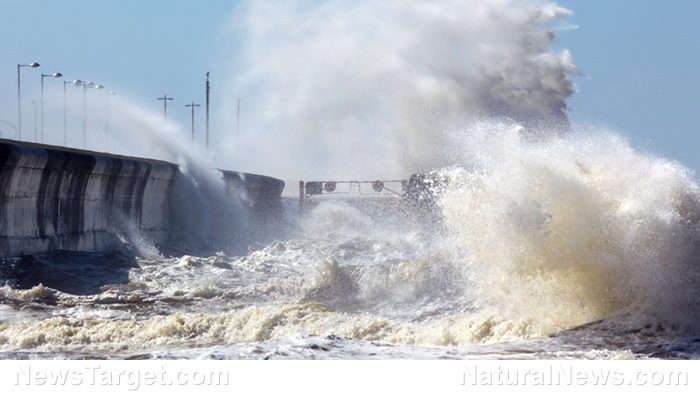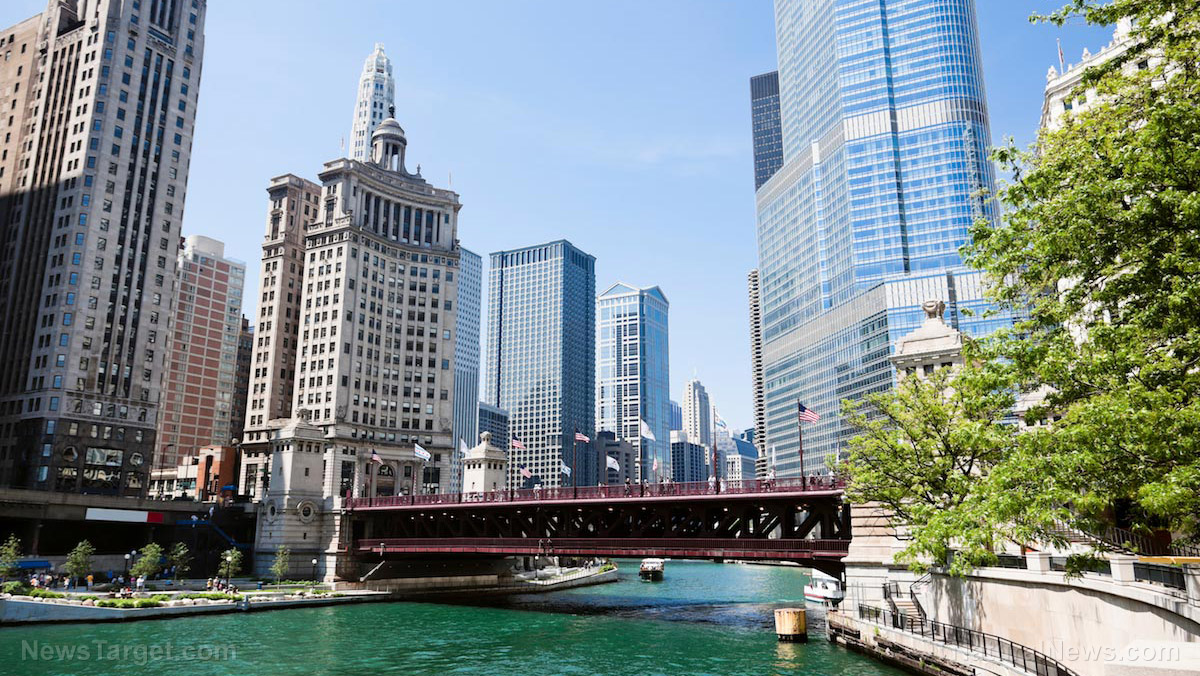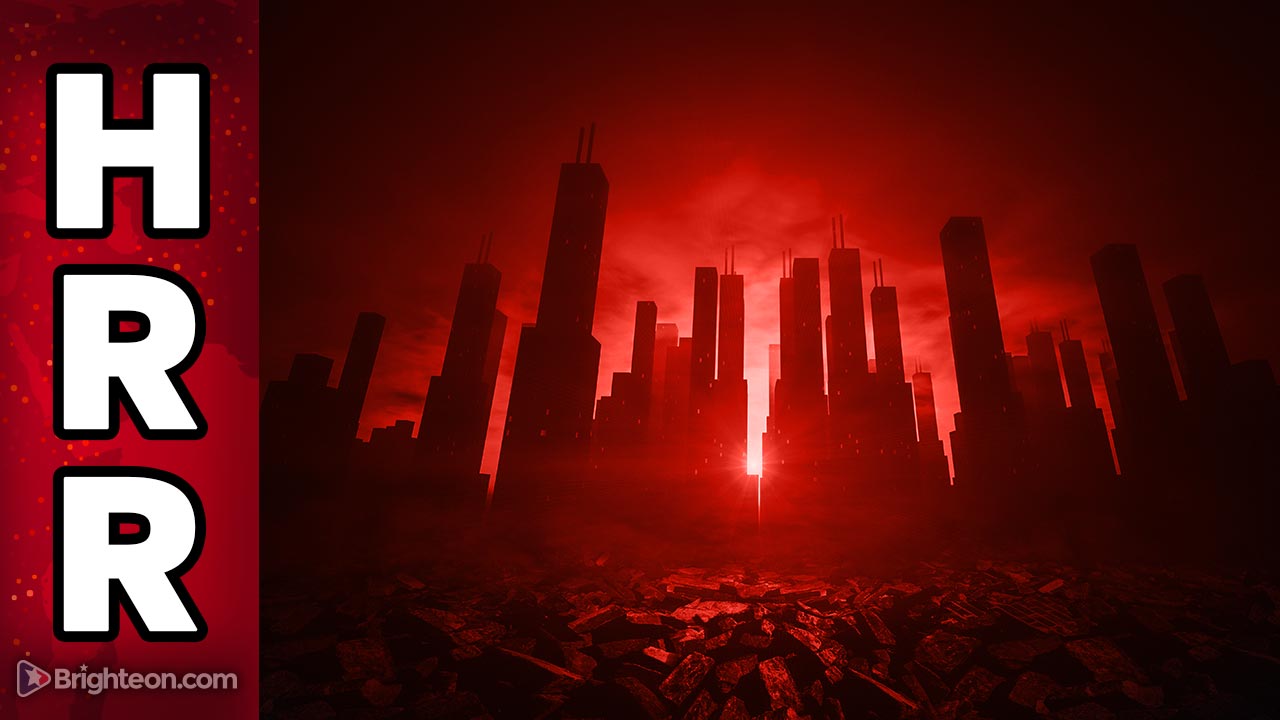Scientists have warned that a 400 foot tsunami could hit the East Coast if an asteroid hit the Atlantic Ocean
08/10/2020 / By News Editors

We live at a time when giant space rocks are whizzing past our planet with alarming regularity. Sometimes we know in advance that they are coming, and sometimes we don’t. In fact, on July 28th an asteroid the size of a car zipped past our planet “at a range that rivals the orbits of some high-flying satellites”, but we had only spotted it for the very first time on July 26th. If we couldn’t see that one until it was nearly upon us, could it be possible that there are much larger potential threats hurtling toward our planet that we currently know nothing about?
(Article by Michael Snyder republished from EndOfTheAmericanDream.com)
In 1998, a big Hollywood movie entitled “Deep Impact” imagined what would happen if a very large asteroid hit the Atlantic Ocean. It is hard to believe that it has been more than 20 years since it first came out, because I can still remember it very vividly. In one of the most memorable scenes in the film, a massive tsunami that is hundreds of feet tall slams into the east coast of the United States causing immense death and destruction.
But that is just a movie. Could something similar actually happen in real life?
On Tuesday, a British news source reminded us that scientists have discovered that such a scenario is actually a very real possibility…
A computer simulation of an asteroid impact tsunami developed by scientists at the University of California, Santa Cruz (USCS), showed waves as high as 400 feet sweeping onto the Atlantic Coast of the US.
Steven Ward, a researcher at the Institute of Geophysics and Planetary Physics at UCSC, and Erik Asphaug, an associate professor of Earth sciences, reported their findings in the Geophysical Journal International.
Of course an asteroid could potentially hit anywhere on the planet, but in their research Ward and Asphaug specifically focused on the Atlantic Ocean, and what their computer simulation came up with was extremely disconcerting…
For the simulation, the researchers chose an impact site consistent with the orientation of the Earth at the time of the predicted encounter – in the Atlantic Ocean about 360 miles from the US coast.
Dr Ward explained that the 60,000-megaton blast of the impact could vaporise the asteroid and blow a cavity in the ocean 11 miles across and all the way down to the seafloor, which is about three miles deep at that point.
Such an impact would send a series of giant waves in all directions, including toward the east coast of the United States.
Today, almost 40 percent of the U.S. population lives in a county that directly borders a shoreline, and the population density right along the east coast is particularly dense.
Florida would probably be the first state to get hit by the waves, and it would be particularly vulnerable because most of the state is just barely above sea level…
South Florida has two big problems. The first is its remarkably flat topography. Half the area that surrounds Miami is less than five feet above sea level. Its highest natural elevation, a limestone ridge that runs from Palm Beach to just south of the city, averages a scant 12 feet. With just three feet of sea-level rise, more than a third of southern Florida will vanish; at six feet, more than half will be gone; if the seas rise 12 feet, South Florida will be little more than an isolated archipelago surrounded by abandoned buildings and crumbling overpasses. And the waters won’t just come in from the east – because the region is so flat, rising seas will come in nearly as fast from the west too, through the Everglades.
In other words, there would be absolutely nothing to keep the tsunami waves from racing across the entire state.
Much of the rest of the east coast would be extremely vulnerable as well. For example, New York City is less than 50 feet above sea level…
Despite having some of the tallest buildings in the world and being well-known for its towers and skyscrapers, New York City has a very low elevation of just 33 feet (10 m) above sea level. New York’s elevation is so low due to its location right on the coast of the United States.
Boston, New Haven, Jersey City, Newark, Atlantic City, Philadelphia, Virginia Beach, Wilmington, Myrtle Beach, Charleston, Savannah and countless other east coast cities are all also less than 50 feet above sea level.
So we are talking about the potential for death and destruction on a scale that is unimaginable.
Washington D.C. would fare a little bit better, because some parts of the D.C. area are up to 410 feet above sea level…
Washington D.C. is relatively flat and located at 410 feet above sea level at its highest point and at sea level at its lowest point.
So I would rather be in D.C. than New York or Boston when a giant tsunami hits, but without a doubt the devastation would be immense in our capital city as well.
Read more at: EndOfTheAmericanDream.com
Submit a correction >>
Tagged Under:
Asteroid, asteroids, atlantic ocean, disaster, East Coast, environment, natural disaster, natural phenomenon, tsunami
This article may contain statements that reflect the opinion of the author
RECENT NEWS & ARTICLES
COPYRIGHT © 2017 COLLAPSE.NEWS
All content posted on this site is protected under Free Speech. Collapse.news is not responsible for content written by contributing authors. The information on this site is provided for educational and entertainment purposes only. It is not intended as a substitute for professional advice of any kind. Collapse.news assumes no responsibility for the use or misuse of this material. All trademarks, registered trademarks and service marks mentioned on this site are the property of their respective owners.





















